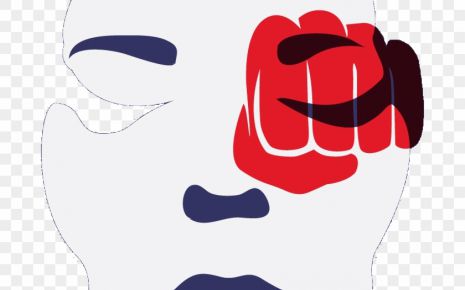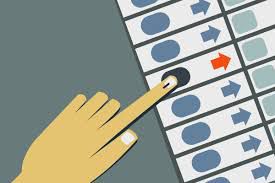Suicide Among Youths: A Study
"Even in young lives, silent pain speaks volumes."...Vishal Banga
Youth suicide in India is when young Indian people deliberately end their own life. People aged 15 to 24 years have the highest suicide rate in India, which is consistent with international trends in youth suicide, 35% of recorded suicides in India occur in this age group. Risk factors and methods of youth suicide differ from those in other age groups.
Introduction
The rise in suicides among Indian youth is a distressing phenomenon that demands urgent attention. Recent years have seen a stark increase in such incidents, indicating an underlying crisis that requires immediate examination. These distressing statistics not only highlight individual tragedies but also raise serious concerns about the societal, cultural, and systemic factors contributing to this alarming trend.
Suicidal behaviours among young people in India are a major problem. An understanding of the reasons for suicide attempts from survivor perspectives is essential to developing suicide prevention programs for this population, as these can provide valuable insights into concerns that are unique to young people, and direct the focus of such programs towards these specific concerns. Qualitative studies are best suited for eliciting such perspectives, but such studies in India are lacking.
We conducted semi-structured interviews with 47 persons between the ages of 15 and 29 who had been admitted to a public hospital in Pune, India, following a suicide attempt. Participants were asked to describe in their own words, what they believed was the reason for the attempt. Data was analysed using inductive thematic analysis and summative content analysis.
There were three broad factors that interacted to lead to suicide attempts:
background factors (individual and environmental factors that increased vulnerability); psychological distress (emotional and cognitive states that led to suicidal ideation); and intervening factors (factors that facilitated transition from distress to the attempt). The most common pattern was the occurrence of an interpersonal stressor shortly before the attempt, which produced distorted cognitions, and overwhelming emotions - usually of anxiety or anger - with ready access to means and/or impulsivity being the final catalysts.
This stressor was generally a trigger associated with long-standing problems involving partners or family members, which had already produced intolerable distress over time. Female participants appeared particularly vulnerable to these stressors, partly due to prevailing socio-cultural norms. Our findings suggest the need for suicide prevention programs in India to foster life skills for young people, engage with high-risk groups (for example, women), and restrict access to harmful substances. Family stakeholders need to be involved in the implementation.
Societal Pressures and Expectations
Within Indian society, youth often grapple with immense pressure to conform to societal expectations. Cultural norms and familial pressures frequently dictate life choices, career paths, and personal relationships. The burden of fulfilling familial obligations while striving to meet societal standards places an overwhelming weight on the shoulders of young individuals. These expectations often limit personal freedom and hinder the pursuit of one's authentic aspirations, leading to mental health strain and, in extreme cases, suicidal tendencies.
According to the National Crime Records Bureau data for 2021, 5,607 girls under 18 died by suicide as compared to 5,075 boys.
Psychiatrist Dr Harish Shetty said, "The NCRB data about more teenaged girls than boys dying by suicide reflects the fact that girls experience more pressure by parents and society to conform and also experience more violence in relationships.'' He said girls are "blamed" for relationships when discovered by parents who view it "as a loss of reputation.
Mental Health Challenges
In India, mental health concerns remain heavily stigmatized, especially among the youth. Misconceptions and societal taboos surrounding mental health problems discourage open discussions and seeking professional help. Limited accessibility to mental health services further compounds this issue, leaving many young individuals struggling in silence. The lack of awareness and acceptance of mental health conditions contributes significantly to the rising suicide rates among Indian youth.
Arjun Gupta, 25, had a troubled adolescence. All of 17 in 2015, Gupta had just cleared the All India Pre-Medical Test (AIPMT), the predecessor of the National Eligibility cum Entrance Test (NEET). For months, he studied 15 hours a day-eight at school, five at a coaching institute, and two by himself:
"The pressure was immense, but finally I was going to join my dream college. It was all going well. Then, suddenly, I was caught in a spiral of very negative thoughts, about myself, my career, my choices."
The next 18 months were harrowing for Gupta; his thoughts turned to self-harm and worse. He was diagnosed with depression but refused to accept it. "Emotions, mental health, depression were all signs of weakness in my mind. Boys didn't have such problems," he said. Over time, Gupta's parents started locking the terrace door and hiding sharp objects at their home in Hisar, Haryana.
The turning point came when Gupta left a post on Facebook: "I wrote about what I was going through, and the support that came my way felt like a game changer." He tweaked his dream of becoming a doctor and trained as a psychologist instead.
NCRB formal role
The annual report on accidental deaths and suicides published by the National Crimes Record Bureau (NCRB) does not tabulate the suffering that people like Gupta go through. It only counts the attempts that resulted in death. According to the most recent NCRB data, 13,089 students died by suicide in 2021, a 32.5 per cent jump compared to the 9,905 deaths in 2017. This amounts to nearly 36 student suicides in India every day of 2021.
Chennai-based psychiatrist Dr Lakshmi Vijayakumar founded Sneha, India's first suicide prevention helpline, in 1986. Distilling the 2021 data, she told Frontline that the reasons listed by NCRB, such as "love affair", "failure in examination", "mental illness", and "family problems", may only be the final trigger, the larger causes lie elsewhere.
A cry for help that goes unnoticed
Mental health issues, academic pressure, and social stigma are driving India's students to suicide. What can we do to prevent it?
Students appear for the Class 12 board exam conducted by the Madhya Pradesh Board of Secondary Education, in Bhopal.
Arjun Gupta, 25, had a troubled adolescence. All of 17 in 2015, Gupta had just cleared the All India Pre-Medical Test (AIPMT), the predecessor of the National Eligibility cum Entrance Test (NEET). For months, he studied 15 hours a day-eight at school, five at a coaching institute, and two by himself: "The pressure was immense, but finally I was going to join my dream college. It was all going well. Then, suddenly, I was caught in a spiral of very negative thoughts, about myself, my career, my choices."
The next 18 months were harrowing for Gupta; his thoughts turned to self-harm and worse. He was diagnosed with depression but refused to accept it. "Emotions, mental health, depression were all signs of weakness in my mind. Boys didn't have such problems," he said. Over time, Gupta's parents started locking the terrace door and hiding sharp objects at their home in Hisar, Haryana.
The turning point came when Gupta left a post on Facebook: "I wrote about what I was going through, and the support that came my way felt like a game changer." He tweaked his dream of becoming a doctor and trained as a psychologist instead.
The annual report on accidental deaths and suicides published by the National Crimes Record Bureau (NCRB) does not tabulate the suffering that people like Gupta go through. It only counts the attempts that resulted in death. According to the most recent NCRB data, 13,089 students died by suicide in 2021, a 32.5 per cent jump compared to the 9,905 deaths in 2017. This amounts to nearly 36 student suicides in India every day of 2021.
India's pressure-cooker education system
While child and adolescent psychiatrist Dr Amit Sen believes the COVID-19 pandemic might explain some of these numbers from 2021, he told Frontline that India anyway accounts for a large chunk of youth suicides worldwide despite the gross underreporting. NCRB data reveal that of the 1,64,033 people who died by suicide in India in 2021, 10,732 were below the age of 18, and 56,543 were in the 18-30 age group. "We worry about how to prevent it, but what about the emotional suffering kids go through to take that step? Are we blind to that? There has been abject apathy," Sen said.
Sen, who is the co-founder of Children First, a mental health service organisation in the Delhi-NCR region, believes distress is caused by a multitude of factors: "Our approach is systemic and multidisciplinary; it addresses various stakeholders. We focus on the family, the educational institution, the developmental history. We engage with all these."A billboard announcing exam toppers from a coaching centre in Kota. Such rankings add to student anxiety.
Author's brother Manoj Kumar having all adequate necessities in life suddenly found hung with rope , the reasons of which yet are unreavealed and based on presumptions only , belonging to Una district of Himachal Pradesh, further the elaboration relies on sudden plans how it resulted into a life lost factor. These are unnoticed cry which needs help;
Unnoticed cry for help
Manjot Chabra, who was enrolled at a NEET coaching institute in Kota, Rajasthan, was found dead in his hostel roomlast month. Chabra left behind three sticky notes. In one, he wished his father a happy birthday. He said "sorry" in another, and in the third, he asked that his friends and parents not be harassed. Back in his hometown, Uttar Pradesh's Rampur, Chabra had earned some renown as a Class XII topper. His friends in Kota remember him as fun-loving and driven, but they also said Chabra sometimes said he was "next in line", in the context of the suicides happening in Kota.
Gupta is struck by how this cry for help from Chabra went unnoticed. "He was a topper, and I once heard a Kota administrator say it's mostly the low scorers who die by suicide."
Chennai-based psychiatrist Dr Lakshmi Vijayakumar founded Sneha, India's first suicide prevention helpline, in 1986. Distilling the 2021 data, she told Frontline that the reasons listed by NCRB, such as "love affair", "failure in examination", "mental illness", and "family problems", may only be the final trigger, the larger causes lie elsewhere.
Suicide, said Vijayakumar, must be understood through its intersectionality: "It is determined by a combination of factors-biological, psychological, social, environmental, religious, contextual." For instance, in the NCRB category of "family problems" it could be disputes and conflict, financial strain, an alcoholic parent, or sexual, emotional or physical abuse. "Exposure to violence when you are young often leads to suicidal behaviour. Bullying and academic pressure are also big determinants. Adolescents could also have issues relating to sexual identity and orientation."
According to Arjun Kapoor, a research fellow at the Centre for Mental Health Law & Policy (CMHLP), half of India's suicides are due to mental health issues while "the remaining 50 per cent happen due to other factors and a lot are impulsive". Youth can be a perilous and turbulent time in life. If young people have no one to confide their distress in, they sometimes feel overwhelmed. "In a fit of anger or distress, they end their life," Kapoor said.
According to a report published in The Lancet, the suicide rate recorded by the NCRB is 37 per cent lower than that reported by the Global Burden of Disease. Kapoor, who leads two of CMHLP's youth suicide prevention projects, believes NCRB's data are unreliable because they underestimate the real extent of the crisis. Equally, not all suicides are reported in India because of the attached stigma.
Academic Stress
The educational landscape in India is renowned for its competitiveness. Youngsters face relentless academic pressure, with success often being narrowly defined by academic achievements. The intense competition, coupled with parental and societal expectations for high performance, leads to stress, anxiety, and a fear of failure among students. The immense pressure to excel academically creates an environment where mental health is often overlooked or sacrificed for the sake of meeting academic
Highlights
NCRB data show 13,089 students died by suicide in 2021, a 32.5 per cent jump compared to the 9,905 deaths in 2017. This amounts to nearly 36 student suicides in India every day of 2021. This emphasises the need to address the emotional suffering that students endure before taking such drastic steps, highlighting the lack of empathy and understanding regarding mental health issues.
Various factors contribute to the suicides: academic pressure, bullying, discrimination, and societal expectations. The crisis highlights the importance of early intervention, support systems, and destigmatising mental health issues among students..
Lack of Support Systems
Despite the increasing prevalence of mental health challenges, the existing support systems in India remain inadequate. Limited access to mental health professionals, a shortage of counselling services, and the dearth of awareness programs exacerbate the problem. The absence of proper infrastructure to address mental health issues leaves young individuals grappling with their problems without adequate guidance or support.
Recorded annual youth suicide rates in India are 80 per 100,000 in females and 34 per 100,000 in males (compared to 10.4 per 100,000 in the general Indian population). These reported figures are estimated to be six- to eight-fold under-estimates of the true incidence.
Surveys of high school students in India estimate prevalence at 6-22%, and of suicide attempts at 0.39-8%.A survey conducted in 2009 found that 3.9% of young people have exhibited some suicidal behavior.
Statistics show that suicide rates in the 15-29-year-old Indian men is twice the global average, while rates in young Indian women is nearly 6 times as high. An article in the May edition of 'SSM-Mental Health', an indexed medical journal, talked to survivors of suicide attempts and made found "interpersonal stressors" involving partners or family members (especially parents) were the primary confers of suicide risk.
Parental support system can make a difference
Some young people are fortunate to have a strong parental support system. Ishita Mehra, 28, remembers struggling with suicidal tendencies from the age of eight or 10. The thoughts returned when Mehra faced bouts of depression, first in 2012, when she was 17, then two years later, when she went to a design school in Delhi: "The brain sometimes felt so foggy that not a single bit of information went through."
Her school counsellor was of little help, often dismissing concerns that were brought to her. Mehra found comfort in her understanding mother and father. Mehra said, "My dad doubled up as my therapist. He went through depression when he was younger and used his experience to tell me 'You'll pull through it.
Conclusion and Solutions
The issue of escalating suicides among Indian youth necessitates immediate and comprehensive action. Creating awareness and destigmatizing mental health problems should be a priority. Implementing mental health education in schools, establishing accessible counselling services, and promoting community support networks are essential steps. Additionally, fostering an environment that encourages open dialogue and acceptance of diverse aspirations can help alleviate the societal pressures that contribute to mental health strain among the youth.
This expanded outline provides a framework for diving deeper into the causes and potential solutions surrounding the rising rates of suicides among Indian youth. Are there specific details or aspects you'd like to focus on within these sections?
Youth suicide in India is when young Indian people deliberately end their own life. People aged 15 to 24 years have the highest suicide rate in India, which is consistent with international trends in youth suicide, 35% of recorded suicides in India occur in this age group. Risk factors and methods of youth suicide differ from those in other age groups.
Introduction
The rise in suicides among Indian youth is a distressing phenomenon that demands urgent attention. Recent years have seen a stark increase in such incidents, indicating an underlying crisis that requires immediate examination. These distressing statistics not only highlight individual tragedies but also raise serious concerns about the societal, cultural, and systemic factors contributing to this alarming trend.
Suicidal behaviours among young people in India are a major problem. An understanding of the reasons for suicide attempts from survivor perspectives is essential to developing suicide prevention programs for this population, as these can provide valuable insights into concerns that are unique to young people, and direct the focus of such programs towards these specific concerns. Qualitative studies are best suited for eliciting such perspectives, but such studies in India are lacking.
We conducted semi-structured interviews with 47 persons between the ages of 15 and 29 who had been admitted to a public hospital in Pune, India, following a suicide attempt. Participants were asked to describe in their own words, what they believed was the reason for the attempt. Data was analysed using inductive thematic analysis and summative content analysis.
There were three broad factors that interacted to lead to suicide attempts:
background factors (individual and environmental factors that increased vulnerability); psychological distress (emotional and cognitive states that led to suicidal ideation); and intervening factors (factors that facilitated transition from distress to the attempt). The most common pattern was the occurrence of an interpersonal stressor shortly before the attempt, which produced distorted cognitions, and overwhelming emotions - usually of anxiety or anger - with ready access to means and/or impulsivity being the final catalysts.
This stressor was generally a trigger associated with long-standing problems involving partners or family members, which had already produced intolerable distress over time. Female participants appeared particularly vulnerable to these stressors, partly due to prevailing socio-cultural norms. Our findings suggest the need for suicide prevention programs in India to foster life skills for young people, engage with high-risk groups (for example, women), and restrict access to harmful substances. Family stakeholders need to be involved in the implementation.
Societal Pressures and Expectations
Within Indian society, youth often grapple with immense pressure to conform to societal expectations. Cultural norms and familial pressures frequently dictate life choices, career paths, and personal relationships. The burden of fulfilling familial obligations while striving to meet societal standards places an overwhelming weight on the shoulders of young individuals. These expectations often limit personal freedom and hinder the pursuit of one's authentic aspirations, leading to mental health strain and, in extreme cases, suicidal tendencies.
According to the National Crime Records Bureau data for 2021, 5,607 girls under 18 died by suicide as compared to 5,075 boys.
Psychiatrist Dr Harish Shetty said, "The NCRB data about more teenaged girls than boys dying by suicide reflects the fact that girls experience more pressure by parents and society to conform and also experience more violence in relationships.'' He said girls are "blamed" for relationships when discovered by parents who view it "as a loss of reputation.
Mental Health Challenges
In India, mental health concerns remain heavily stigmatized, especially among the youth. Misconceptions and societal taboos surrounding mental health problems discourage open discussions and seeking professional help. Limited accessibility to mental health services further compounds this issue, leaving many young individuals struggling in silence. The lack of awareness and acceptance of mental health conditions contributes significantly to the rising suicide rates among Indian youth.
Arjun Gupta, 25, had a troubled adolescence. All of 17 in 2015, Gupta had just cleared the All India Pre-Medical Test (AIPMT), the predecessor of the National Eligibility cum Entrance Test (NEET). For months, he studied 15 hours a day-eight at school, five at a coaching institute, and two by himself:
"The pressure was immense, but finally I was going to join my dream college. It was all going well. Then, suddenly, I was caught in a spiral of very negative thoughts, about myself, my career, my choices."
The next 18 months were harrowing for Gupta; his thoughts turned to self-harm and worse. He was diagnosed with depression but refused to accept it. "Emotions, mental health, depression were all signs of weakness in my mind. Boys didn't have such problems," he said. Over time, Gupta's parents started locking the terrace door and hiding sharp objects at their home in Hisar, Haryana.
The turning point came when Gupta left a post on Facebook: "I wrote about what I was going through, and the support that came my way felt like a game changer." He tweaked his dream of becoming a doctor and trained as a psychologist instead.
NCRB formal role
The annual report on accidental deaths and suicides published by the National Crimes Record Bureau (NCRB) does not tabulate the suffering that people like Gupta go through. It only counts the attempts that resulted in death. According to the most recent NCRB data, 13,089 students died by suicide in 2021, a 32.5 per cent jump compared to the 9,905 deaths in 2017. This amounts to nearly 36 student suicides in India every day of 2021.
Chennai-based psychiatrist Dr Lakshmi Vijayakumar founded Sneha, India's first suicide prevention helpline, in 1986. Distilling the 2021 data, she told Frontline that the reasons listed by NCRB, such as "love affair", "failure in examination", "mental illness", and "family problems", may only be the final trigger, the larger causes lie elsewhere.
A cry for help that goes unnoticed
Mental health issues, academic pressure, and social stigma are driving India's students to suicide. What can we do to prevent it?
Students appear for the Class 12 board exam conducted by the Madhya Pradesh Board of Secondary Education, in Bhopal.
Arjun Gupta, 25, had a troubled adolescence. All of 17 in 2015, Gupta had just cleared the All India Pre-Medical Test (AIPMT), the predecessor of the National Eligibility cum Entrance Test (NEET). For months, he studied 15 hours a day-eight at school, five at a coaching institute, and two by himself: "The pressure was immense, but finally I was going to join my dream college. It was all going well. Then, suddenly, I was caught in a spiral of very negative thoughts, about myself, my career, my choices."
The next 18 months were harrowing for Gupta; his thoughts turned to self-harm and worse. He was diagnosed with depression but refused to accept it. "Emotions, mental health, depression were all signs of weakness in my mind. Boys didn't have such problems," he said. Over time, Gupta's parents started locking the terrace door and hiding sharp objects at their home in Hisar, Haryana.
The turning point came when Gupta left a post on Facebook: "I wrote about what I was going through, and the support that came my way felt like a game changer." He tweaked his dream of becoming a doctor and trained as a psychologist instead.
The annual report on accidental deaths and suicides published by the National Crimes Record Bureau (NCRB) does not tabulate the suffering that people like Gupta go through. It only counts the attempts that resulted in death. According to the most recent NCRB data, 13,089 students died by suicide in 2021, a 32.5 per cent jump compared to the 9,905 deaths in 2017. This amounts to nearly 36 student suicides in India every day of 2021.
India's pressure-cooker education system
While child and adolescent psychiatrist Dr Amit Sen believes the COVID-19 pandemic might explain some of these numbers from 2021, he told Frontline that India anyway accounts for a large chunk of youth suicides worldwide despite the gross underreporting. NCRB data reveal that of the 1,64,033 people who died by suicide in India in 2021, 10,732 were below the age of 18, and 56,543 were in the 18-30 age group. "We worry about how to prevent it, but what about the emotional suffering kids go through to take that step? Are we blind to that? There has been abject apathy," Sen said.
Sen, who is the co-founder of Children First, a mental health service organisation in the Delhi-NCR region, believes distress is caused by a multitude of factors: "Our approach is systemic and multidisciplinary; it addresses various stakeholders. We focus on the family, the educational institution, the developmental history. We engage with all these."A billboard announcing exam toppers from a coaching centre in Kota. Such rankings add to student anxiety.
Author's brother Manoj Kumar having all adequate necessities in life suddenly found hung with rope , the reasons of which yet are unreavealed and based on presumptions only , belonging to Una district of Himachal Pradesh, further the elaboration relies on sudden plans how it resulted into a life lost factor. These are unnoticed cry which needs help;
Unnoticed cry for help
Manjot Chabra, who was enrolled at a NEET coaching institute in Kota, Rajasthan, was found dead in his hostel roomlast month. Chabra left behind three sticky notes. In one, he wished his father a happy birthday. He said "sorry" in another, and in the third, he asked that his friends and parents not be harassed. Back in his hometown, Uttar Pradesh's Rampur, Chabra had earned some renown as a Class XII topper. His friends in Kota remember him as fun-loving and driven, but they also said Chabra sometimes said he was "next in line", in the context of the suicides happening in Kota.
Gupta is struck by how this cry for help from Chabra went unnoticed. "He was a topper, and I once heard a Kota administrator say it's mostly the low scorers who die by suicide."
Chennai-based psychiatrist Dr Lakshmi Vijayakumar founded Sneha, India's first suicide prevention helpline, in 1986. Distilling the 2021 data, she told Frontline that the reasons listed by NCRB, such as "love affair", "failure in examination", "mental illness", and "family problems", may only be the final trigger, the larger causes lie elsewhere.
Suicide, said Vijayakumar, must be understood through its intersectionality: "It is determined by a combination of factors-biological, psychological, social, environmental, religious, contextual." For instance, in the NCRB category of "family problems" it could be disputes and conflict, financial strain, an alcoholic parent, or sexual, emotional or physical abuse. "Exposure to violence when you are young often leads to suicidal behaviour. Bullying and academic pressure are also big determinants. Adolescents could also have issues relating to sexual identity and orientation."
According to Arjun Kapoor, a research fellow at the Centre for Mental Health Law & Policy (CMHLP), half of India's suicides are due to mental health issues while "the remaining 50 per cent happen due to other factors and a lot are impulsive". Youth can be a perilous and turbulent time in life. If young people have no one to confide their distress in, they sometimes feel overwhelmed. "In a fit of anger or distress, they end their life," Kapoor said.
According to a report published in The Lancet, the suicide rate recorded by the NCRB is 37 per cent lower than that reported by the Global Burden of Disease. Kapoor, who leads two of CMHLP's youth suicide prevention projects, believes NCRB's data are unreliable because they underestimate the real extent of the crisis. Equally, not all suicides are reported in India because of the attached stigma.
Academic Stress
The educational landscape in India is renowned for its competitiveness. Youngsters face relentless academic pressure, with success often being narrowly defined by academic achievements. The intense competition, coupled with parental and societal expectations for high performance, leads to stress, anxiety, and a fear of failure among students. The immense pressure to excel academically creates an environment where mental health is often overlooked or sacrificed for the sake of meeting academic
Highlights
NCRB data show 13,089 students died by suicide in 2021, a 32.5 per cent jump compared to the 9,905 deaths in 2017. This amounts to nearly 36 student suicides in India every day of 2021. This emphasises the need to address the emotional suffering that students endure before taking such drastic steps, highlighting the lack of empathy and understanding regarding mental health issues.
Various factors contribute to the suicides: academic pressure, bullying, discrimination, and societal expectations. The crisis highlights the importance of early intervention, support systems, and destigmatising mental health issues among students..
Lack of Support Systems
Despite the increasing prevalence of mental health challenges, the existing support systems in India remain inadequate. Limited access to mental health professionals, a shortage of counselling services, and the dearth of awareness programs exacerbate the problem. The absence of proper infrastructure to address mental health issues leaves young individuals grappling with their problems without adequate guidance or support.
Recorded annual youth suicide rates in India are 80 per 100,000 in females and 34 per 100,000 in males (compared to 10.4 per 100,000 in the general Indian population). These reported figures are estimated to be six- to eight-fold under-estimates of the true incidence.
Surveys of high school students in India estimate prevalence at 6-22%, and of suicide attempts at 0.39-8%.A survey conducted in 2009 found that 3.9% of young people have exhibited some suicidal behavior.
Statistics show that suicide rates in the 15-29-year-old Indian men is twice the global average, while rates in young Indian women is nearly 6 times as high. An article in the May edition of 'SSM-Mental Health', an indexed medical journal, talked to survivors of suicide attempts and made found "interpersonal stressors" involving partners or family members (especially parents) were the primary confers of suicide risk.
Parental support system can make a difference
Some young people are fortunate to have a strong parental support system. Ishita Mehra, 28, remembers struggling with suicidal tendencies from the age of eight or 10. The thoughts returned when Mehra faced bouts of depression, first in 2012, when she was 17, then two years later, when she went to a design school in Delhi: "The brain sometimes felt so foggy that not a single bit of information went through."
Her school counsellor was of little help, often dismissing concerns that were brought to her. Mehra found comfort in her understanding mother and father. Mehra said, "My dad doubled up as my therapist. He went through depression when he was younger and used his experience to tell me 'You'll pull through it.
Conclusion and Solutions
The issue of escalating suicides among Indian youth necessitates immediate and comprehensive action. Creating awareness and destigmatizing mental health problems should be a priority. Implementing mental health education in schools, establishing accessible counselling services, and promoting community support networks are essential steps. Additionally, fostering an environment that encourages open dialogue and acceptance of diverse aspirations can help alleviate the societal pressures that contribute to mental health strain among the youth.
This expanded outline provides a framework for diving deeper into the causes and potential solutions surrounding the rising rates of suicides among Indian youth. Are there specific details or aspects you'd like to focus on within these sections?
Law Article in India
Legal Question & Answers
Lawyers in India - Search By City
LawArticles
How To File For Mutual Divorce In Delhi

How To File For Mutual Divorce In Delhi Mutual Consent Divorce is the Simplest Way to Obtain a D...
Increased Age For Girls Marriage

It is hoped that the Prohibition of Child Marriage (Amendment) Bill, 2021, which intends to inc...
Facade of Social Media

One may very easily get absorbed in the lives of others as one scrolls through a Facebook news ...
Section 482 CrPc - Quashing Of FIR: Guid...

The Inherent power under Section 482 in The Code Of Criminal Procedure, 1973 (37th Chapter of t...
The Uniform Civil Code (UCC) in India: A...

The Uniform Civil Code (UCC) is a concept that proposes the unification of personal laws across...
Role Of Artificial Intelligence In Legal...

Artificial intelligence (AI) is revolutionizing various sectors of the economy, and the legal i...








Please Drop Your Comments